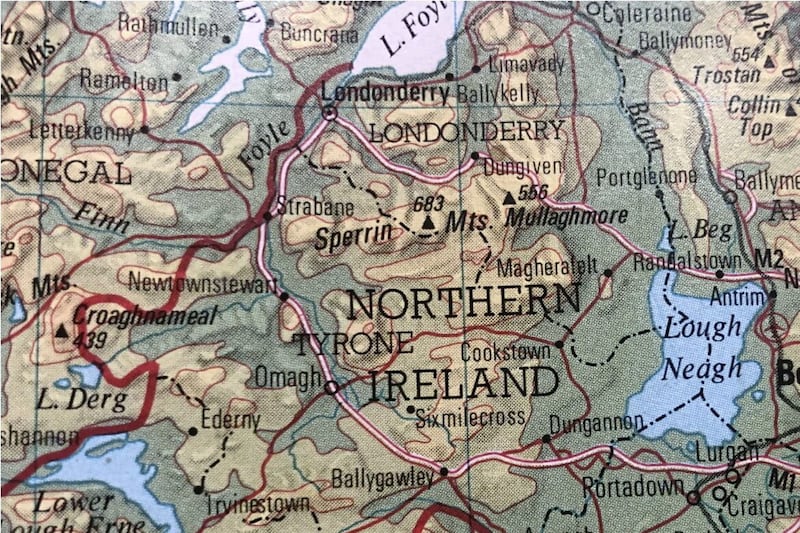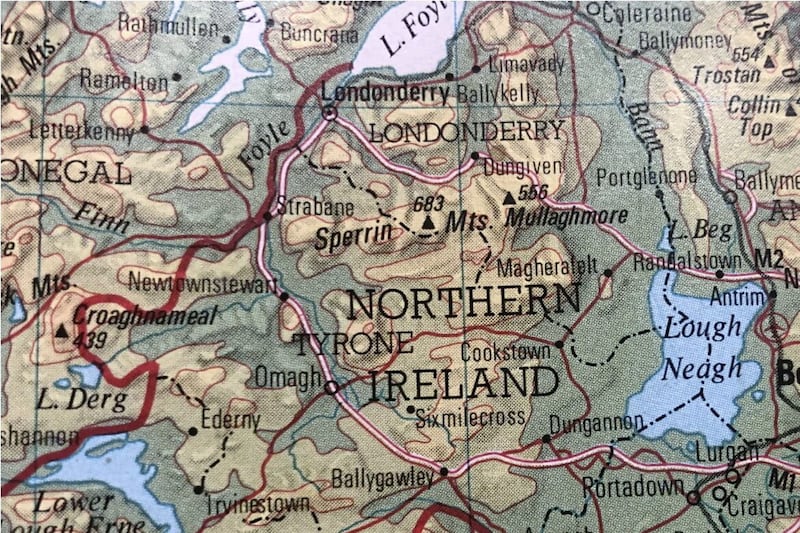THE Anglo-Irish Treaty was signed in the early hours of the morning of December 6 1921 between negotiating teams from the British government and Sinn Féin.
Its main provision relating to Ulster was Article 12. It stipulated that if Northern Ireland, which had been in existence since the summer of 1921, opted not to join the Irish Free State, as was its right under the Treaty, a boundary commission would determine the border "in accordance with the wishes of the inhabitants, so far as may be compatible with economic and geographic conditions".
Although Northern Ireland was nominally included in the Irish Free State, it took the first opportunity to opt out of the Dublin jurisdiction in December 1922, which then triggered the boundary commission to be established.
Speaking to Winston Churchill in May 1922, the Northern Ireland prime minister James Craig claimed: "The Boundary Commission is the root of all evil."
Craig, like most Ulster unionists, was vehemently opposed to the boundary commission. Although Ulster unionists were not party to the Treaty, they were now obliged to adhere to its clauses.
The boundary commission re-opened uncertainty and put Northern Ireland's future in doubt, at least significant parts of it, yet again. Craig told the British prime minister David Lloyd George he would refuse to cooperate with the commission as there was "no precedent in the history of the British empire for taking away territory from an established government without its sanction".
Even though, in 1919, Craig had suggested the establishment of a boundary commission to examine the border area for Northern and Southern Ireland under the Government of Ireland Act, to avoid the jurisdiction of the Northern parliament extending over the whole nine counties of Ulster, by 1921 he emphatically opposed the commission as "odious". By that stage he had his Northern 'citadel' which he intended to sit on 'like a rock'.
The idea of a boundary commission was not a new one nor necessarily a bad one from Sinn Féin's perspective, although the belief that the transferring of large areas from the north to the south would leave the remaining territory an unviable rump, was deeply flawed, as the industrial heartbeat of Northern Ireland was Belfast and its hinterlands, not the west and south of the six counties.
Northern Ireland could have survived economically without counties Tyrone and Fermanagh. Also, and paradoxically, the more the boundary commission favoured the nationalist case, the smaller the nationalist population that would remain in Northern Ireland, and thus the case for national unity would be diminished.
While the boundary commission was viewed as a major concession to Sinn Féin, the details and wording of the clause agreed to in the Treaty proved to be disastrous for Sinn Féin and particularly for northern nationalists close to the border.
Sinn Féin floundered greatly by acceding to such a vague and ambiguous clause and by not insisting on similar terms for a boundary commission to the ones that had convened in post-First World War Europe.
The boundary commission clause of the Treaty was riddled with ambiguities. No timetable was mentioned nor method outlined to ascertain the wishes of the inhabitants, how exactly economic and geographic conditions would relate to popular opinion, and which would prove most important.
No plebiscite was asked for. The areas and sizes of the units (small areas like district electoral divisions or entire counties) to be considered for transfer were not decided upon. Could Free State territory be transferred as well as northern territory? The clause was open to many different interpretations.
The proposed boundary commission for Ireland was markedly different to the boundary commissions that were convened in Europe after the First World War to resolve territorial disputes in five European regions: Upper Silesia, Allenstein and Marienwerder (disputes between Germany and Poland); Schleswig (between Germany and Denmark); and Klagenfurt (between Austria and Yugoslavia).
Firstly, unlike in Ireland, plebiscites were used in all five regions to determine the wishes of the inhabitants which took primacy over economic and geographic factors.
Sinn Féin should have, at a minimum, insisted on a plebiscite for contested areas. Also, Ireland had been partitioned before the boundary commission convened, whereas elsewhere in Europe areas were partitioned after boundary commissions had deliberated. There was no time limit specified for the Irish boundary commission, again unique to the other ones in Europe.
One of the most fatal anomalies from an Irish nationalist perspective was that the Irish boundary commission was the only one that did not have an independent chairperson, and with its vague wording, the ambiguity was to be determined by a British-appointed judge.
By contrast, the other boundary commissions in Europe were presided over by chairpersons from countries with no vested interest in the disputed territories. The British argument that this was an intra-Empire dispute wears thin given that the Imperial government was the British government, one of the contesting parties.
With the Irish Free State and Northern Ireland commissioners cancelling each other out, the decision by the Sinn Féin plenipotentiaries not to contest the British appointing the judge to chair the boundary commission proved decisive.
The judge appointed was Justice Richard Feetham, a British-born South African-based judge with conservative political views. Unsurprisingly, all of his interpretations and decisions favoured the unionist over the nationalist case. In nationalist circles he became known as 'Feetham-Cheat'em'.
He decided not to conduct a plebiscite, choosing instead to assume a quasi-judicial approach and ruling out wholesale transfers, disadvantageous to nationalists. Feetham looked at economic conditions as they prevailed in 1924/25 and not how they were interpreted by the Treaty signatories in 1921, again disadvantageous to nationalists.
In fact, Feetham refused to hear any evidence on how the Treaty signatories interpreted Article 12, despite its obvious ambiguities. This proved highly damaging for the nationalist cause.
For example, the northern government began construction on a reservoir to supply water to the residents of Belfast in the Silent Valley in the Mourne Mountains in 1923. This was used as an argument to retain all of Co Down in Northern Ireland.
Feetham decided that smaller units such as district electoral divisions, instead of large units such as entire counties, should form the basis of areas to be considered for transfer, also disadvantageous to nationalists.
He also gave primacy of economic and geographic conditions over the will of the people, the primacy of the Government of Ireland Act 1920 over the Anglo-Irish Treaty, and that the Irish Free State could lose as well as gain territory, all decisions disadvantageous to nationalists. It resulted in the commission recommending minimal transfers to the Free State but also transfers from the Free State to Northern Ireland.
Once this was leaked in November 1925 by the Morning Post newspaper, the Irish Free State government rushed over to London to have the report shelved, resulting in the border remaining as it was, as it does to the present day.
Even though Craig claimed the boundary commission was the "root of all evil" for unionists, it resulted in uniting unionists and leaving the boundary unchanged.
For nationalists, though, the boundary commission was the root of much evil. It gave false hopes for the transfer of large tracts of territory and people from Northern Ireland to the Irish Free State. Nationalists felt they could continue to ignore and obstruct the institutions of Northern Ireland, particularly in areas of nationalist majorities.
The nationalist optimism over the boundary commission, in many ways, explains the fraction of time devoted to partition during the acrimonious Dáil Éireann debates over the Treaty.
Both the pro- and anti-Treaty sides supported the boundary commission as a means to end or at least limit partition. Both sides were complacent about the vague terms of reference for the boundary commission and the lack of provision for plebiscites even in border areas.
While the Sinn Féin plenipotentiaries were not partitionists and genuinely sought a united Ireland, they blundered enormously in acceding to such a vague and indefinable boundary commission, which ultimately was the primary reason for the original border being retained as it was, as it is. The devil was in the details.
Cormac Moore is author of Birth of the Border: The Impact of Partition in Ireland (Merrion Press, 2019).








